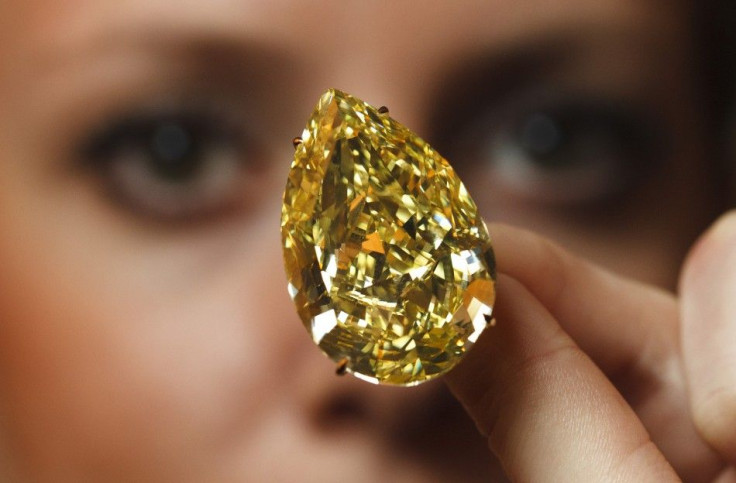Diamond at heart of royal upheavals up for sale

A diamond coveted by kings, queens and princes for centuries, used to reinforce alliances between nations and pawned to pay off royal debts goes on sale at Sotheby's in Geneva on May 15.
The auction house called the Beau Sancy one of the most important historic diamonds ever to come to auction, reflecting its part in the fluctuating fortunes of Europe's royal families for more than 400 years.
The stone, a 35-carat modified pear double rose cut diamond belonging to Georg Friedrich, Prince of Prussia and head of the former ruling dynasty of the German empire, is expected to fetch $2-4 million.
It's a stone that appeals to me greatly as a survivor of all those tumultuous events, said David Bennett, chairman of Sotheby's jewellery in Europe and the Middle East.
Stones from royal collections hardly ever appear at auction. In my career this is an absolute one-off, he told Reuters by telephone from New York.
Bennett, who sold a pink diamond for $46.2 million in 2010 which was a record for any jewel at auction, said estimating the value of a stone like the Beau Sancy was difficult given its rarity.
The diamond originated from the mines in India near Golconda and was acquired by Nicolas de Harlay, Lord of Sancy, in Constantinople in the 1500s, explaining its name.
In 1604 it was bought for 75,000 livres by French king Henry IV as a gift for his wife, Marie de Medici.
JEALOUS QUEEN?
According to Sotheby's, the queen had long coveted the stone, especially after learning that de Harlay had sold a larger diamond called the Sancy and now part of the Louvre Collection to King James I of England.
Henry IV was assassinated in 1610, and after years of rivalry between Marie and her son King Louis XIII, she was eventually exiled in disgrace.
She escaped to the Netherlands, and to settle her debts her possessions were sold, including the Beau Sancy which was acquired by Prince Frederick Henry of Orange-Nassau for 80,000 florins, the largest expenditure in the state budget of 1641.
In the same year, the diamond was used as a sweetener to help seal the wedding of Frederick's son William to Mary Stuart, daughter of King Charles I of England.
Following Mary's death in 1660, the Beau Sancy was pawned to settle her debts, but in 1677 the stone re-entered the Treasure of the House of Orange-Nassau following the wedding of William III to Mary II Stuart.
The couple ascended the throne of England in 1689, meaning the Beau Sancy entered the collection of the Queen of England, but since the couple had no children, the diamond returned to the Netherlands.
From there it moved to the Prussian monarchy in 1702, becoming the principal ornament of the new royal crown of Prussia, but its dramatic story did not end there.
The diamond remained in Berlin after the last king of Prussia fled to exile in November, 1918 at the end of World War One, and at the end of World War Two it was transferred to a bricked-up crypt for safe-keeping.
British troops found the stone and returned it to the estate of House of Prussia, where it has remained ever since.
© Copyright Thomson Reuters {{Year}}. All rights reserved.





















